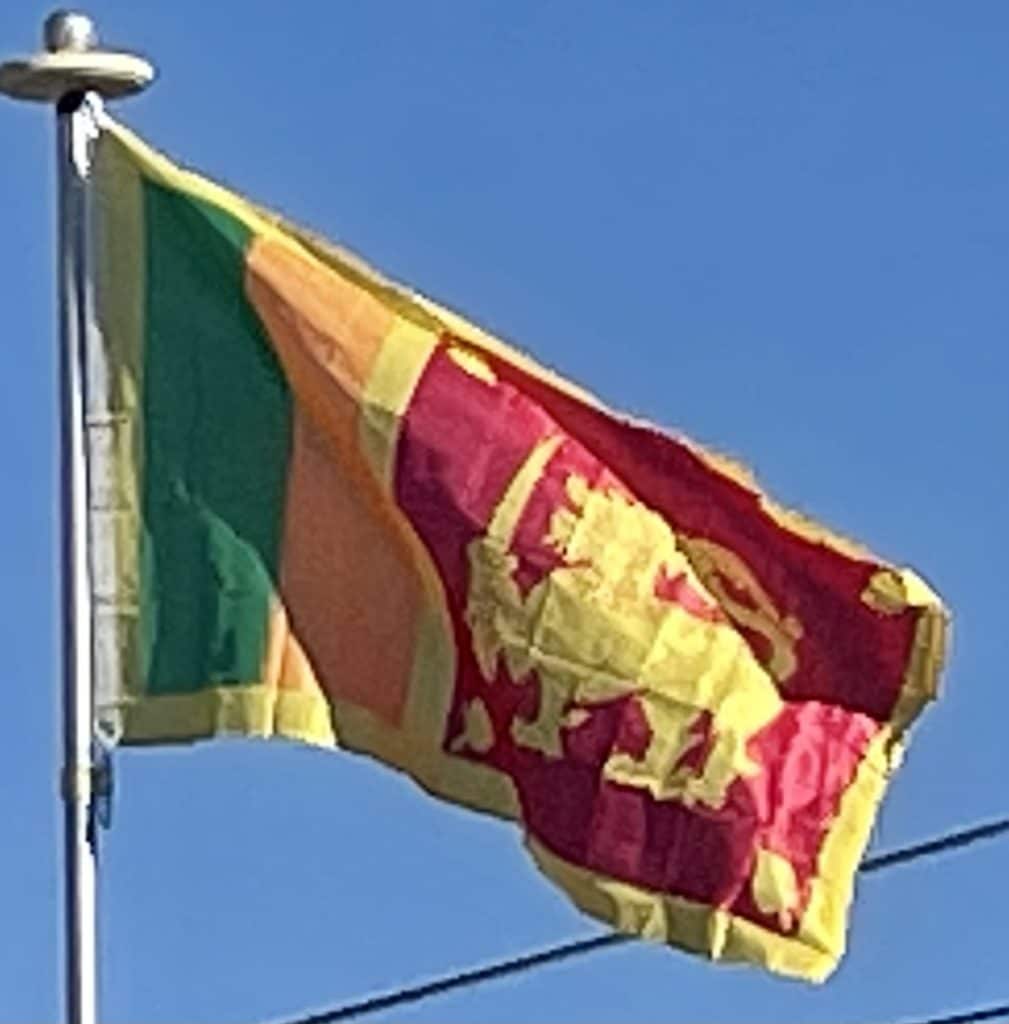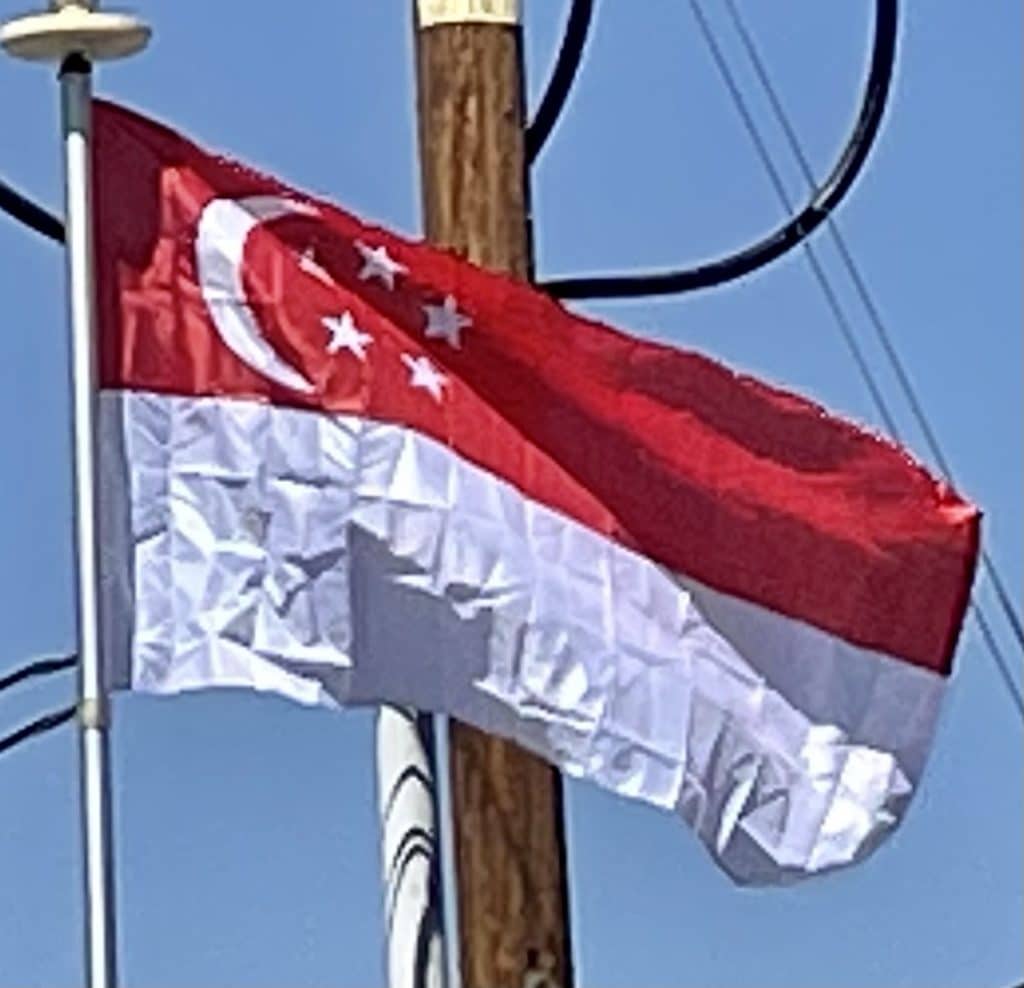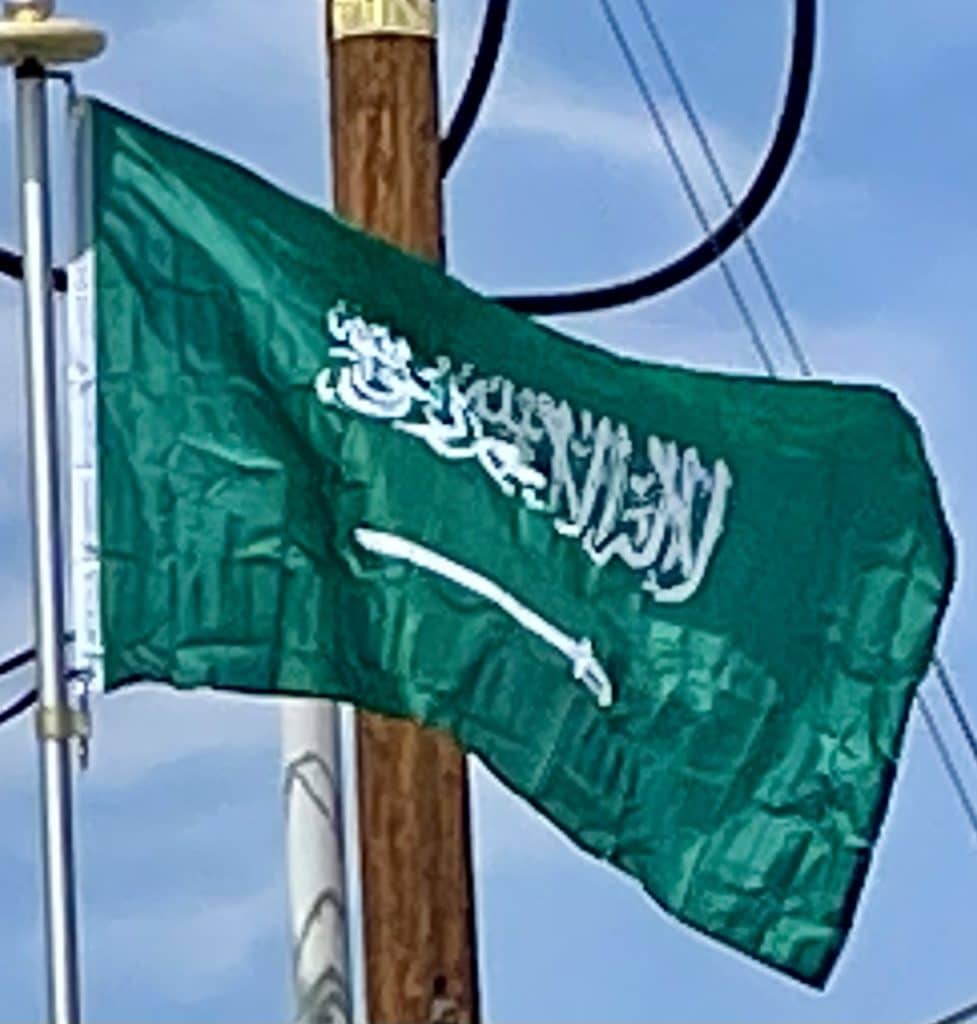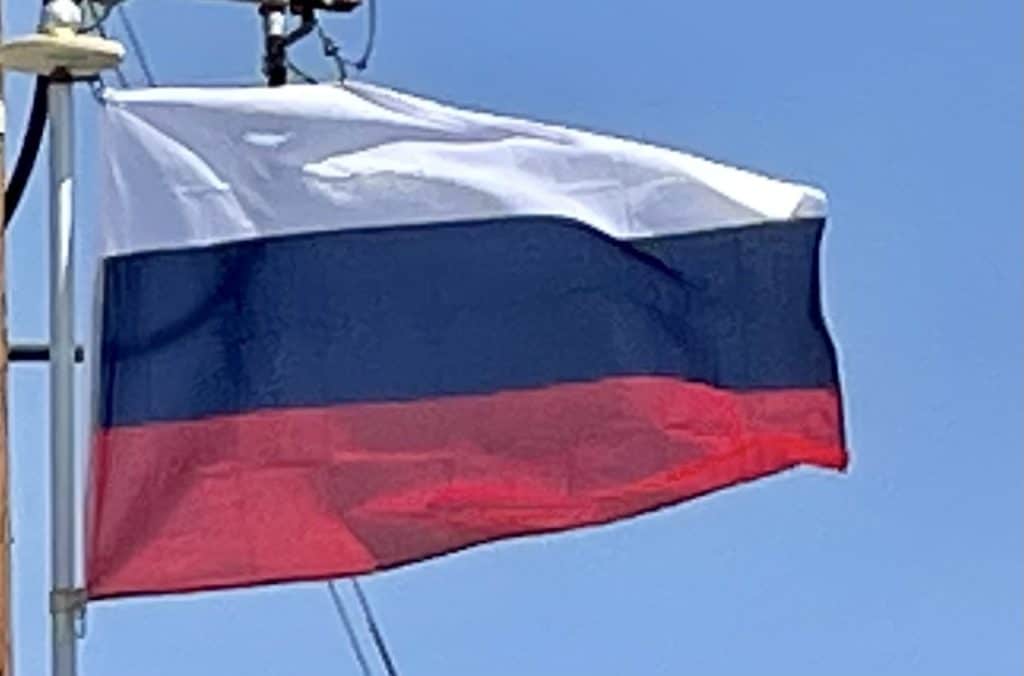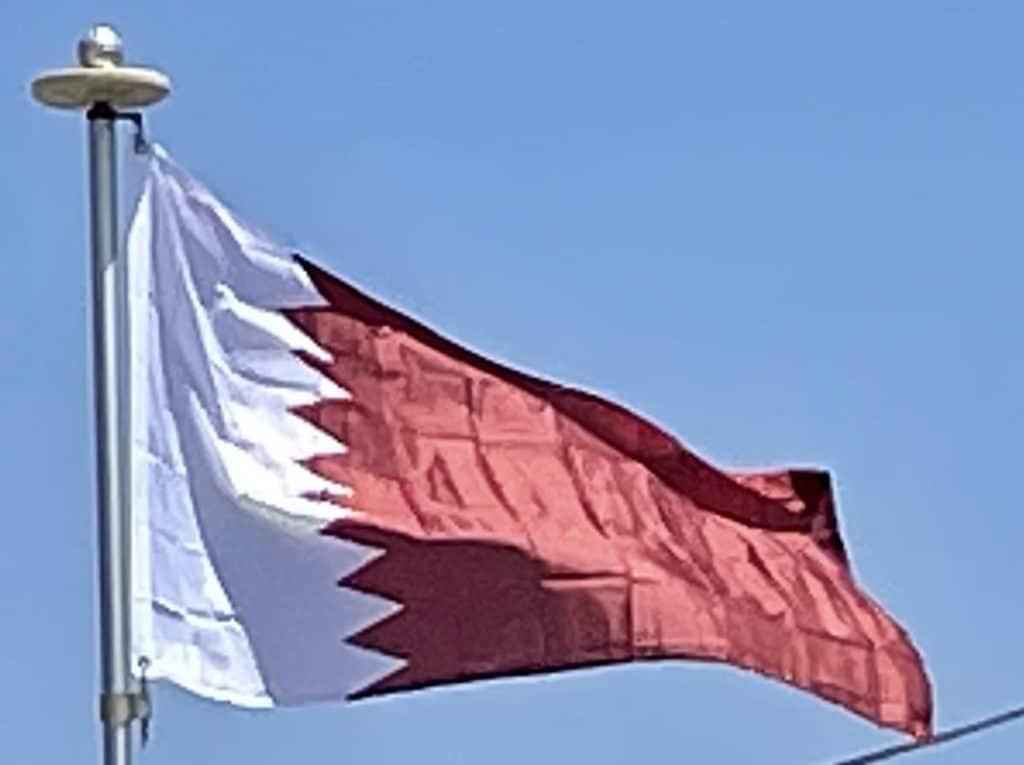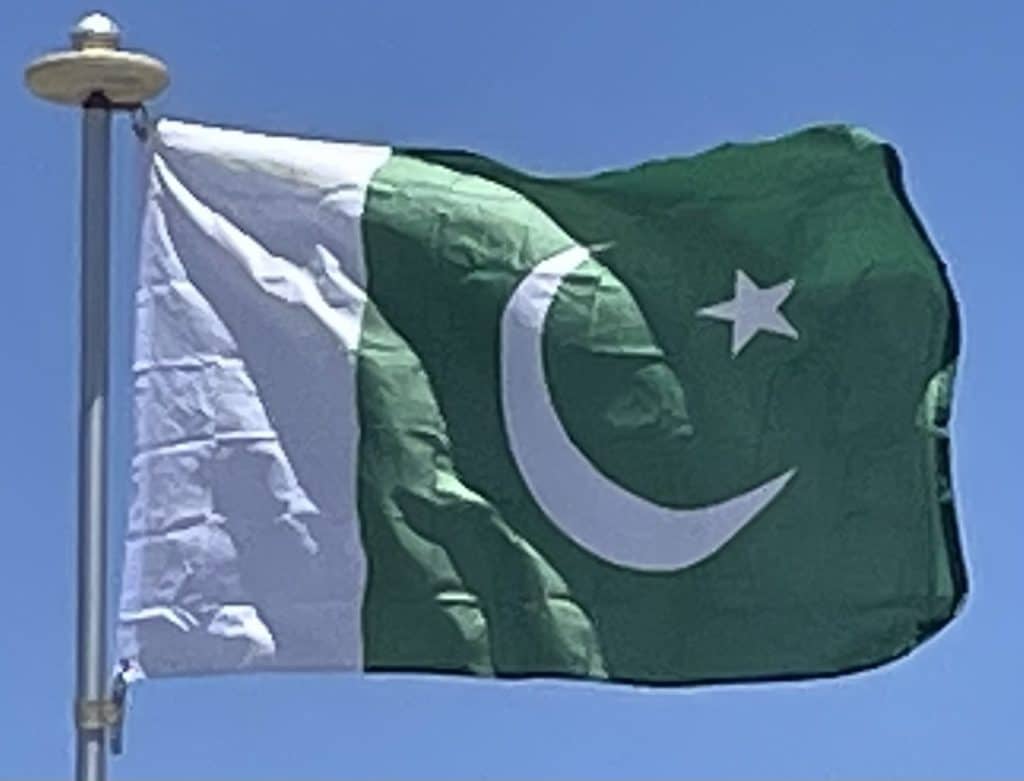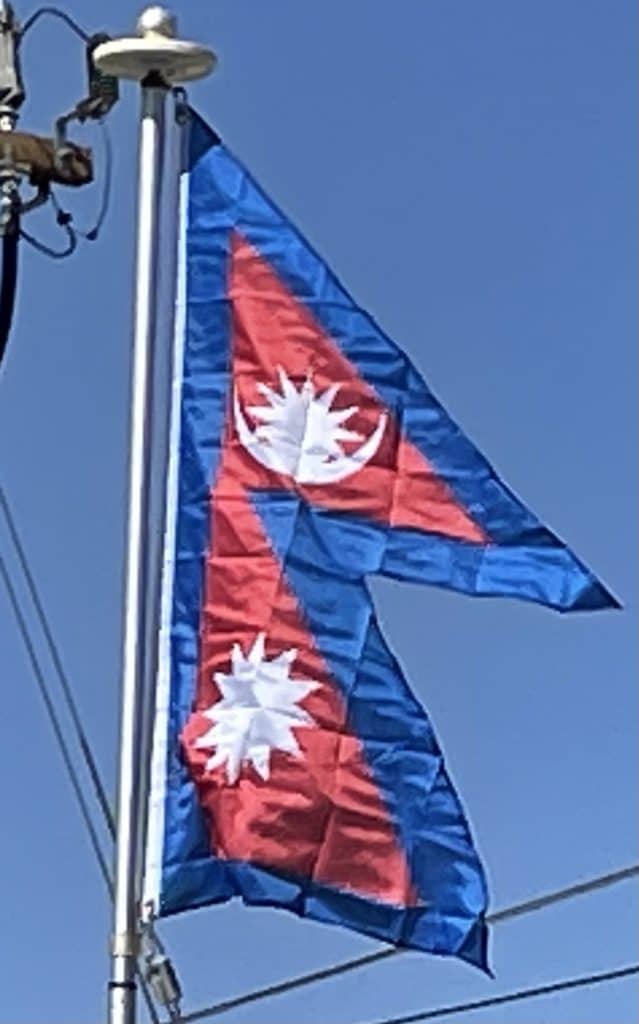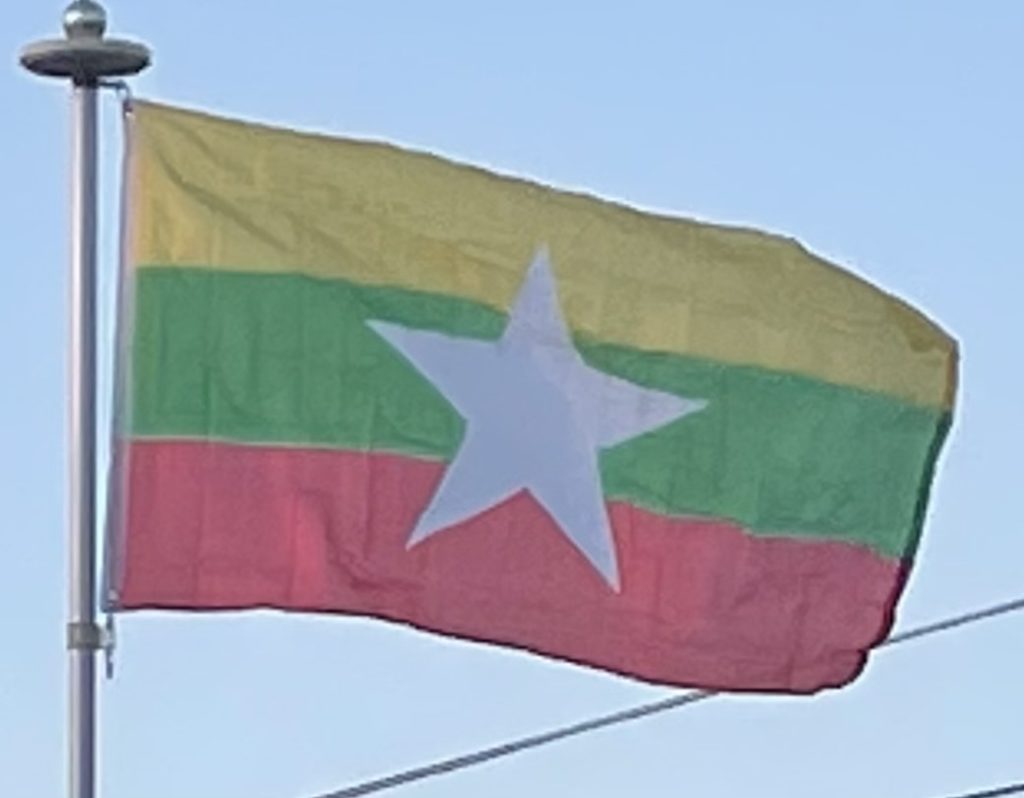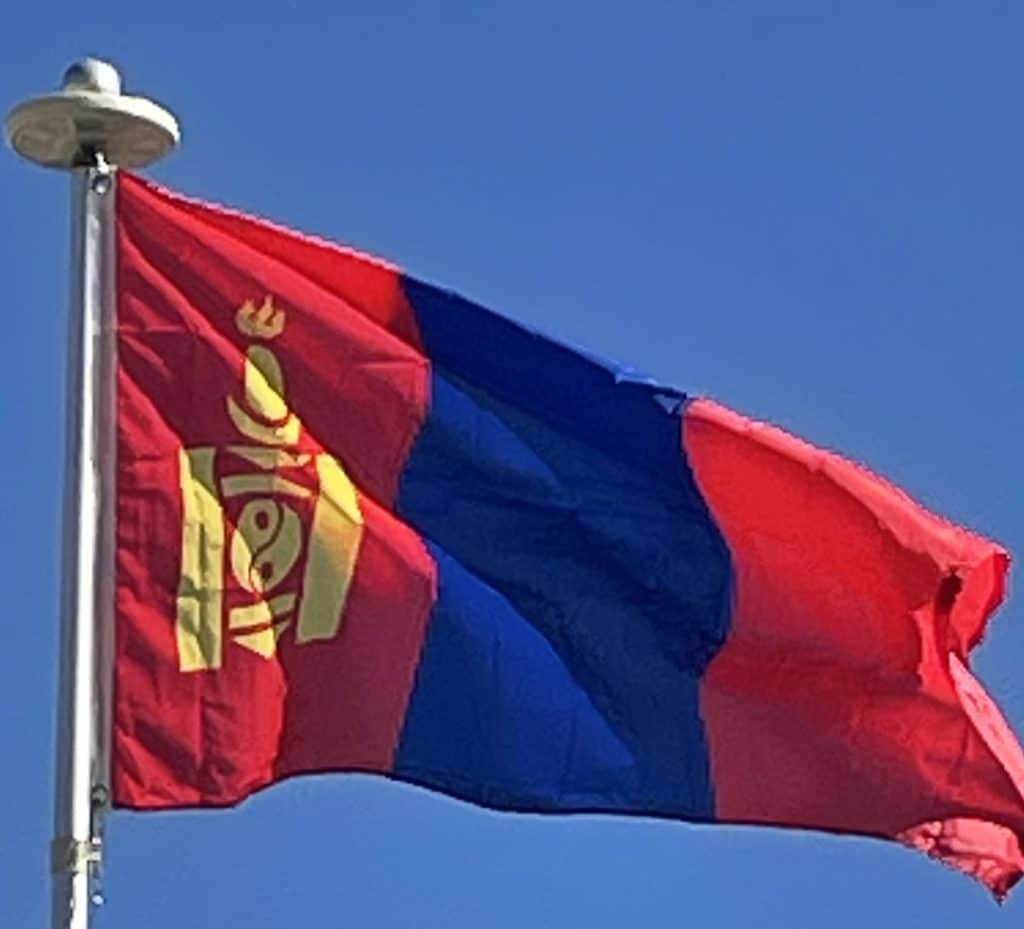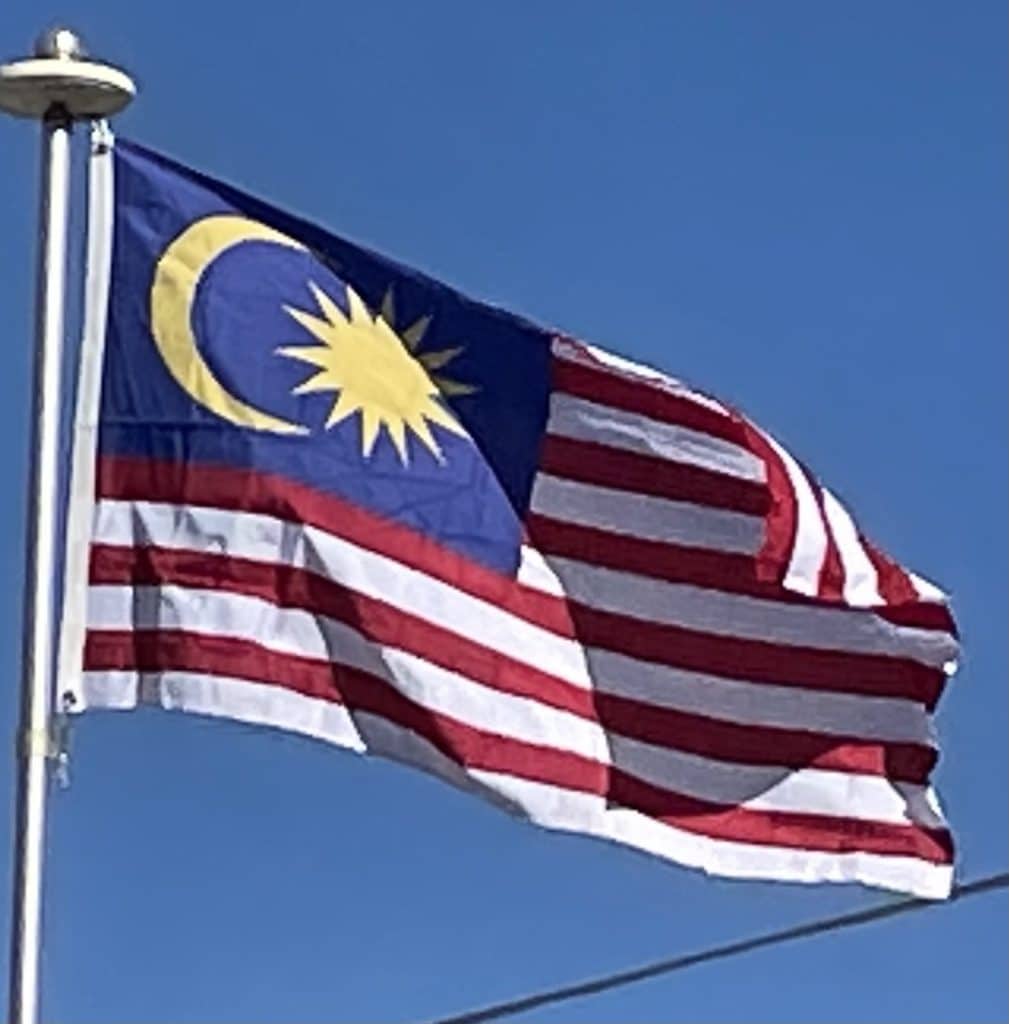Sri Lanka
The flag of Sri Lanka, also called the Sinha Flag or Lion Flag, consists of a golden lion holding a kastane sword in its right fore-paw in a maroon background with four gold bo leaves, one in each corner. This is bordered by gold, and to its left are two vertical stripes of equal size in green and orange, with the orange stripe closest to the lion. The lion and the maroon background represent the Sinhalese, while the saffron border and four bo leaves represent concepts of mettā, karuṇā, muditā and upekshā respectively. The stripes represent the country’s two largest minorities, with the orange representing the Tamils living in Sri Lanka – both the native Sri Lankan Tamils and the Indian Tamils of Sri Lanka – and the green representing the Muslims of Sri Lanka.
